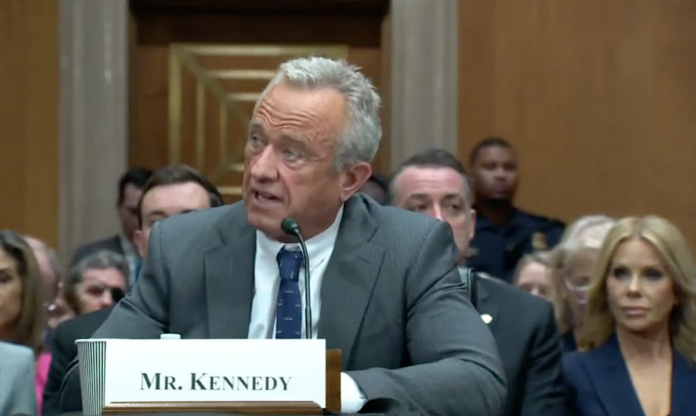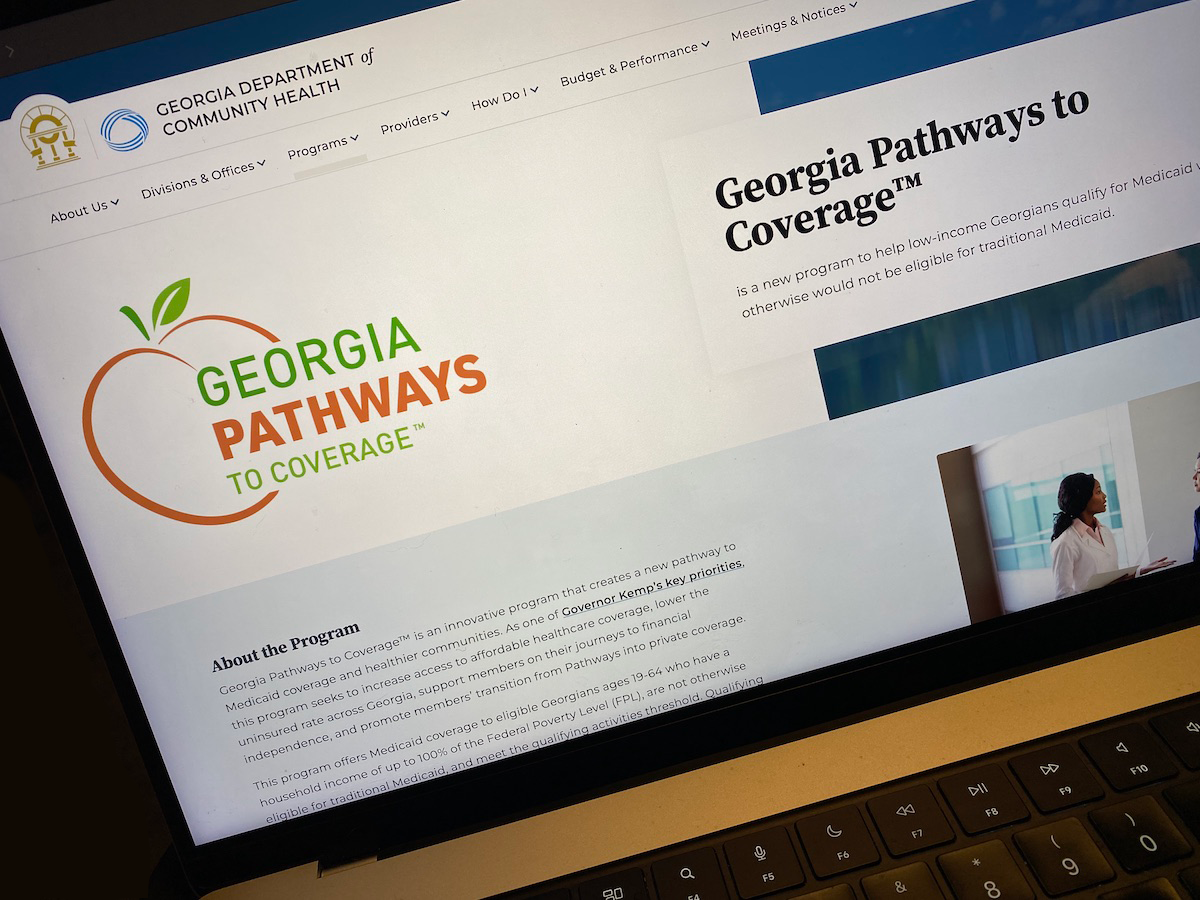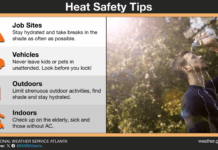
WASHINGTON — The Make America Healthy Again commission, created earlier this year by President Donald Trump, released its first report Thursday, calling on the administration and lawmakers to improve the well-being of the country’s children.
The 73-page report was published just after Trump and several Cabinet secretaries held an event highlighting their concerns with four areas — nutrition, physical activity, environmental factors and “overmedicalization.”
“Over the next 80 days, the commission will build on its work in this report to develop a road map to bold and transformative public health reforms for our consideration,” Trump said.
Health and Human Services Secretary Robert F. Kennedy Jr. said the report and the administration’s approach to childhood health issues is that “there is no difference between good economic policy, good environmental policy and good public health policy and good industrial policy. We can have all of them.”
U.S. Department of Agriculture Secretary Brooke Rollins said that everyone knows American farming interests need to be at the center of the Make America Healthy Again, or MAHA, agenda.
“We have the most robust, the safest, the best agriculture system in the world,” Rollins said.
Mainstream farm groups, however, were not happy. “Farmers are identified as ‘critical partners,’ yet were excluded from development of the report, despite many requests for a seat at the table,” American Farm Bureau President Zippy Duvall wrote in a statement.
‘Corporatization and consolidation’ in food system
The numerous ways that American agriculture and the food people choose to eat have evolved received considerable attention in the report.
“Our agricultural system has historically focused on abundance and affordability. The progress we have made is largely thanks to the hard work of American farmers, ranchers, and food scientists,” it states. “However, the rise of (ultra processed food) has corresponded with a pattern of corporatization and consolidation in our food system. Today’s diet-related chronic disease crisis, demand a closer examination of this pattern and its broader impact.”
The report mentions pesticides numerous times, but doesn’t call for them to be banned outright.
“Some studies have raised concerns about possible links between some of these products and adverse health outcomes, especially in children, but human studies are limited,” the report says. “For example, a selection of research studies on a herbicide (glyphosate) have noted a range of possible health effects, ranging from reproductive and developmental disorders as well as cancers, liver inflammation and metabolic disturbances.”
Kennedy testified during a U.S. Senate committee hearing earlier this week that based on drafts of the report he had seen, “there is not a single word in them that should worry the American farmer.”
His comments came during an exchange with Mississippi Republican Sen. Cindy Hyde-Smith, who specifically asked him about glyphosate, a commonly used herbicide, that she referred to as “one of the most thoroughly studied products of its kind.”
“We’re talking about more than 1,500 studies and 50-plus years of review by the EPA and other leading global health authorities that have affirmed its safety when used as directed,” Hyde-Smith said. “Have you been able to review thousands of studies and decades of scientific review in a matter of months?”
Kennedy responded during that Tuesday hearing that her “information about the report is just simply wrong.”
Sleep, stress, social media
The report combines recommendations that have long been supported by research, like exercising regularly and eating a well-balanced diet, with proposals that aren’t fully supported by science.
It notes that “physical activity, encompassing moderate-to-vigorous exercise, aerobic fitness, and reduced sedentary time, is critical for child health and well being.
“However, American youth have seen a steady decline in activity and cardiorespiratory fitness over decades, contributing to rising obesity, diabetes, mental health disorders, and cardiometabolic risks.”
The report calls out children who are unable to get enough sleep and chronic stress as health challenges, in addition to the prevalence of social media.
“The near-ubiquitous presence of social media in the lives of American adolescents, with up to 95% of teens regularly using at least one or more of these platforms—is increasingly correlated with a concerning rise in mental health challenges, particularly among younger users,” the report says. “With the vast majority of teenagers engaging with these platforms, understanding the nuanced consequences and mental health impacts of social media on their developing well-being is of critical public health importance.”
No mention of gun violence
The report didn’t include any mention of gun violence, a leading cause of death in American children and teenagers, according to data from the Centers for Disease Control and Prevention, analysis from the nonpartisan health research organization KFF and a report from the Johns Hopkins Center for Gun Violence Solutions.
“The United States has by far the highest rate of child and teen firearm mortality among peer nations. In no other similarly large, wealthy country are firearms in the top four causes of death for children and teens, let alone the number one cause,” KFF’s analysis states. “U.S. states with the most gun laws have lower rates of child and teen firearm deaths than states with few gun laws. But, even states with the lowest child and teen firearm deaths have rates much higher than what peer countries experience.”
The Johns Hopkins report notes that the gun death rate in children between the ages of 1 and 17 has “increased by 106 percent since 2013 and (has) been the leading cause of death among this group since 2020.”
In 2022, there were 2,526 gun deaths in that age range, for an average of seven a day, according to the report.
The KFF analysis shows other leading causes of childhood death include motor vehicles, cancer, suffocation, congenital anomalies, poisoning and drowning.
Farm Bureau, Corn Growers critical
Farm groups were dubious about the report’s conclusions.
The American Farm Bureau’s Duvall said it was “deeply troubling for the White House to endorse a report that sows seeds of doubt and fear about our food system and farming practices, then attempts to celebrate farmers and the critical role they play in producing the safest food supply in the world.”
“The report also expresses a desire to ensure farmers continue to thrive, but undermining confidence in our food system directly contradicts that noble goal,” said Duvall. “The report spotlights outlier studies and presents unproven theories that feed a false narrative and only then does it acknowledge a mountain of evidence about the safety of our food system.”
Iowa Corn Growers Association Chair Jolene Riessen said the “misinformation surrounding crop protection tools is incredibly upsetting because if there’s one thing all farmers have in common, it’s that we care about raising safe, healthy, and affordable food that nourishes families around the world.
“Agriculture is a science, and we have spent years testing and researching pesticides, like glyphosate, to reaffirm that they are a safe and vital tool farmers rely on to feed and fuel the world.”
Others said the report was lacking. Lori Ann Burd, the Center for Biological Diversity’s environmental health director, wrote in a statement the “report’s acknowledgement of pesticides’ risks to our children’s health is a small step forward,” before rebuking Trump administration officials for not going further.
“The grassroots movement of millions of Americans who trusted Trump with their votes won’t forget that RFK Jr. was cowed by the powerful industrial farming forces determined to make sure there are no U.S. restrictions on harmful pesticides like atrazine, which is banned in 60 nations,” Burd wrote. “Instead of protecting our kids, we use over 70 million pounds of atrazine each year on the corn and sugarcane crops that are making Americans sick. The fight to ban atrazine will continue.”






